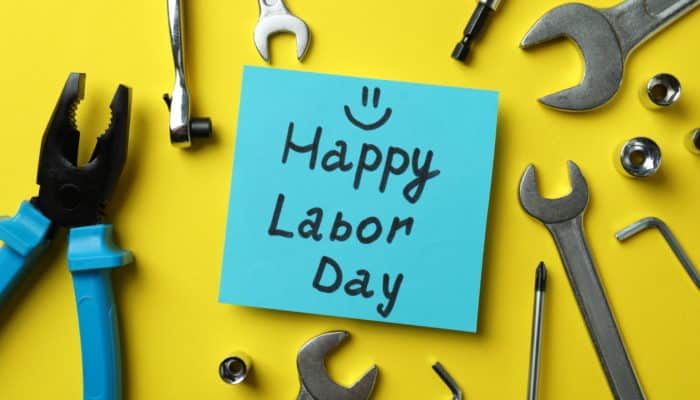Many people in the United States observe Labor Day as a time off from work, an opportunity to enjoy a backyard barbecue with friends and family and a final festive occasion of Summer prior to a busy Fall, i.e., getting back to school and work as well as holiday season.
The public should remember the work of those in the labor movement who fought for workers’ rights and also celebrate the essential role workers play in America’s growth and development.
Historically, the Labor Day holiday began with a heated campaign by workers in the late 19th Century to win support and recognition for their contributions.
Labor Day traditionally is celebrated on the first Monday in September.
There are two versions as to the origins of the holiday. One version is set in September 1882 where the Knights of Labor, the largest and one of the most important American labor organizations at the time, held a public parade in New York City on September 5th, featuring various labor organizations with the aid of the fledgling Central Labor Union (CLU) of New York. Subsequently, CLU, Matthew Maguire, proposed that a national Labor Day holiday be held on the first Monday of each September to mark the previously mentioned successful public demonstration.
In another version, Labor Day set in September was proposed by Peter J. McGuire, a vice president of the American Federation of Labor. In spring 1882, McGuire reportedly proposed a “general holiday for the laboring classes” to the CLU, which would begin with a street parade of organized labor and end with a picnic fundraiser for local unions. McGuire suggested the first Monday in September as an ideal date for Labor Day since the weather is good because of the time of year, and it would fall between the July 4th celebration/holiday and Thanksgiving Day. The state of Oregon became the first U.S. state to make it an official public holiday. Twenty-nine (29) other states had joined by the time the federal government declared it a federal holiday in 1894.
Ultimately in July 1894, President Grover Cleveland signed into law legislation creating a national Labor Day holiday in early September. This signing was done while federal troops in Chicago crushed a strike by railroad and Pullman sleeping car company workers, leaving some thirty people dead.
The federal law, however, only made it a holiday for federal workers. As late as the 1930s, unions encouraged workers to strike to make sure they got the day off. All U.S. states, the District of Columbia, and the United States territories have subsequently made Labor Day a statutory holiday.
Worldwide, Communist and Socialist factions chose May 1st as the date to mark the Haymarket affair. A 1904 conference issued a plea that trade unions stage rallies on the first day of May and demanding to make the eight-hour workday a standard. They organized the action in the name of “universal peace.” The 1st of May is a national, public holiday in many countries across the world, generally known as “Labour Day,” “International Workers’ Day,” or a similar name, although a number of countries celebrate a Labor Day on other dates significant to them, such as Canada, which celebrates Labor Day, like the U.S., on the first Monday of September. The Haymarket affair occurred on May 4, 1886, during a period of time when most American laborers worked eighteen (18) to twenty (20) hours per day. Tens of thousands of workers protested in cities across the U.S. to demand an eight-hour (8) workday. Police in Chicago attacked protesters, beat, and shot at the group and killed six. When outraged Chicagoans attended an initially peaceful protest the next evening in Haymarket Square, police advanced on the crowd again. An unidentified person detonated a bomb which killed a police officer, leading the police to open fire on the protesters and provoke violence that led to the deaths of about a dozen workers and police.
Consequently, the Labor Day holiday was and is meant to be a day that the citizens of the United States recognize and celebrate the contribution, achievements, and dedication of the working class. It is a way of thanking, acknowledging, and paying tribute to all the contributions American workers have made to the growth and develop of the nation since the Industrial Revolution of the 1800s.
If you have any additional Questions regarding the foregoing or have any legal issue or concern, please contact the law firm of CASERTA & SPIRITI, in Miami Lakes, Florida.

